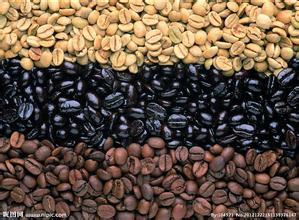Classification of planting methods of Blue Mountain Coffee
planting method hand pick
Category Edit
Jamaica coffee has three varieties:
Blue Mountain Coffee
(Jamaica Blue Mountain Coffee), which is divided into four grades under Blue Mountain Coffee and Alpine Coffee. From the top to the bottom of the quality points are: NO.1, NO.2, NO.3 and PB, PB is round beans. According to CIB standards, only coffee grown above 666 meters above sea level is called Jamaica Blue Mountain Coffee;
Alpine coffee
(Jamaica High Mountain Supreme Coffee Beans) The coffee produced in the Blue Mountain region of Jamaica below 666 meters is called alpine coffee, which is also the coffee second only to Blue Mountain coffee quality. It is called the brother variety of Blue Mountain coffee by industry insiders. Jamaica Blue Mountain coffee produces very little caffeine, so if you want to taste Jamaica coffee, then Jamaica alpine coffee is your best choice.
Jamaica Coffee
(Jamaica Prime Coffee Beans)。Coffee grown outside the Blue Mountains is called Jamaica coffee. It turns out that Chinese coffee industry generally has a wrong understanding that only coffee planted in the Blue Mountain area above 1800 meters above sea level can be called Blue Mountain Coffee. In fact, there is only one manor on the mountain crown above 1800 meters in the Blue Mountain Mountains, Amber, which is descended from Chinese people. The manor's main surname is Lyn(Lin), whose ancestral home is Guangdong, China. The manor has only 30 hectares of land and its yield is very small. Blue Mountain Coffee is mainly distributed in John Crow, St. John's Peak,Mossman's Peak,High Peak,Blue Mountian Peak and other five mountain areas in the Blue Mountains.

Important Notice :
前街咖啡 FrontStreet Coffee has moved to new addredd:
FrontStreet Coffee Address: 315,Donghua East Road,GuangZhou
Tel:020 38364473
- Prev

Introduction of Honduran flavor and taste
Flavor and taste characteristics: full of particles, uniform taste, tobacco flavor the Republic of Cuba is located in the West Indies, with a detached and primitive natural environment, the beautiful Caribbean Sea and the world-famous Crystal Mountain Coffee. In 1748, coffee was introduced into Cuba from Domiga, and Cuba began to grow coffee ever since. The land in Cuba is fertile, the climate is humid, and Rain Water is abundant.
- Next

Characteristics of scientific research and cultivation of coffee in Costa Rica
The research center, located about 30 kilometers northeast of San Jose, the capital of Costa Rica, belongs to the Costa Rican Coffee Association and is the research institution for planting, breeding and quality inspection of Brazilian coffee fruits in Costa rica. in addition, it also has 10 hectares of experimental plots, planting a number of excellent varieties. Coffee is the main agricultural product in Costa Rica, with an annual output of more than 2 million bags
Related
- Does Rose Summer choose Blue, Green or Red? Detailed explanation of Rose Summer Coffee plots and Classification in Panamanian Jade Manor
- What is the difference between the origin, producing area, processing plant, cooperative and manor of coffee beans?
- How fine does the espresso powder fit? how to grind the espresso?
- Sca coffee roasting degree color card coffee roasting degree 8 roasting color values what do you mean?
- The practice of lattes: how to make lattes at home
- Introduction to Indonesian Fine Coffee beans-- Java Coffee producing area of Indonesian Arabica Coffee
- How much will the flavor of light and medium roasted rose summer be expressed? What baking level is rose summer suitable for?
- Introduction to the characteristics of washing, sun-drying or wet-planing coffee commonly used in Mantenin, Indonesia
- Price characteristics of Arabica Coffee Bean Starbucks introduction to Manning Coffee Bean Taste producing area Variety Manor
- What is the authentic Yega flavor? What are the flavor characteristics of the really excellent Yejasuffi coffee beans?

